Washington State, often celebrated for its stunning natural landscapes ranging from evergreen forests to dramatic coastlines and volcanic peaks, boasts a culinary scene as diverse and rich as its geography. This bounty is thanks to a unique combination of fertile volcanic soil, abundant water sources, and access to the vast Pacific Ocean. Exploring the local foods is an essential part of experiencing the true essence of Washington.
From the freshest seafood caught in its cool waters to the prolific produce harvested from its valleys and plains, the state offers a remarkable array of flavors. These ingredients are not just commodities; they are deeply woven into the fabric of Washington’s identity, history, and economy. Discovering what foods Washington State is known for is a delicious journey into the heart of the Pacific Northwest. This guide will take you through some of the most iconic and must-try foods that define Washington’s vibrant culinary landscape.
What Foods Is Washington State Known For – An Essential Guide
Washington’s extensive coastline and intricate network of inland waterways provide a treasure trove of seafood. The cool, clean waters are ideal for nurturing a variety of marine life, making seafood a cornerstone of the state’s diet and culinary reputation. The connection between Washingtonians and the sea is ancient, with indigenous peoples having relied on these resources for millennia. Today, sustainable fishing and farming practices ensure these traditions continue to thrive.
Pacific Salmon
Washington is virtually synonymous with salmon. This iconic fish is deeply embedded in the state’s ecosystem, culture, and economy. Six main species of Pacific salmon grace the waters: Chinook (King), Coho, Sockeye, Chum, Pink, and Steelhead (a type of rainbow trout that behaves like salmon). Each variety offers a distinct flavor profile and texture, enjoyed in countless ways across the state.
Whether it’s smoked over alderwood, grilled on a cedar plank (a nod to Native American cooking methods), baked, pan-seared, or even served raw in sushi, salmon is a versatile delight. You’ll find it prominently featured on menus from fine dining restaurants to casual cafes and bustling fish markets like the famous Pike Place Market in Seattle. Experiencing fresh Washington salmon is often a highlight for visitors.
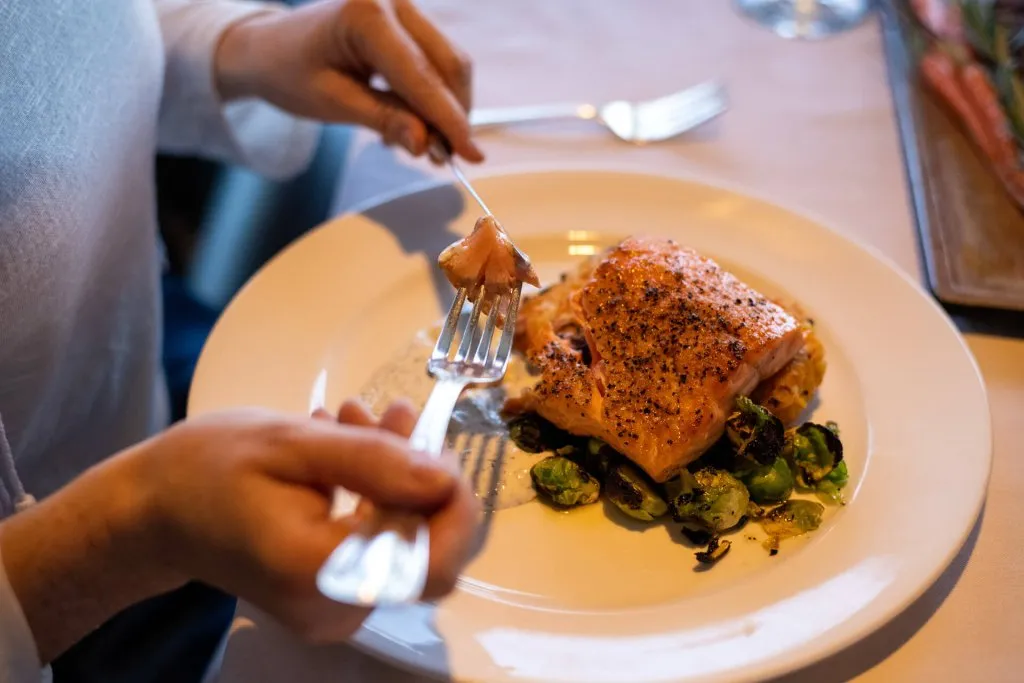
Pacific salmon comes in six varieties.
Dungeness Crab
Named after the town of Dungeness on the Olympic Peninsula, this sweet, succulent crab is another celebrated Washington seafood. Dungeness crab is a culinary delicacy, known for its tender meat and rich flavor. It’s a favorite for special occasions and summer seafood boils alike. Crabbing is a popular recreational and commercial activity here.
What to Eat in Fort Worth – A Culinary Deep Dive
Discover the Top Restaurants in Denver – A Culinary Journey
Discover Where to Visit in Las Vegas
Each year, millions of pounds of Dungeness crab are harvested from Washington’s waters. The season and locations for crabbing are carefully managed by the Washington State Department of Fish & Wildlife to ensure sustainability. Eating fresh Dungeness crab, whether simply steamed with butter or incorporated into dishes like crab cakes or cioppino, is a quintessential Washington experience.
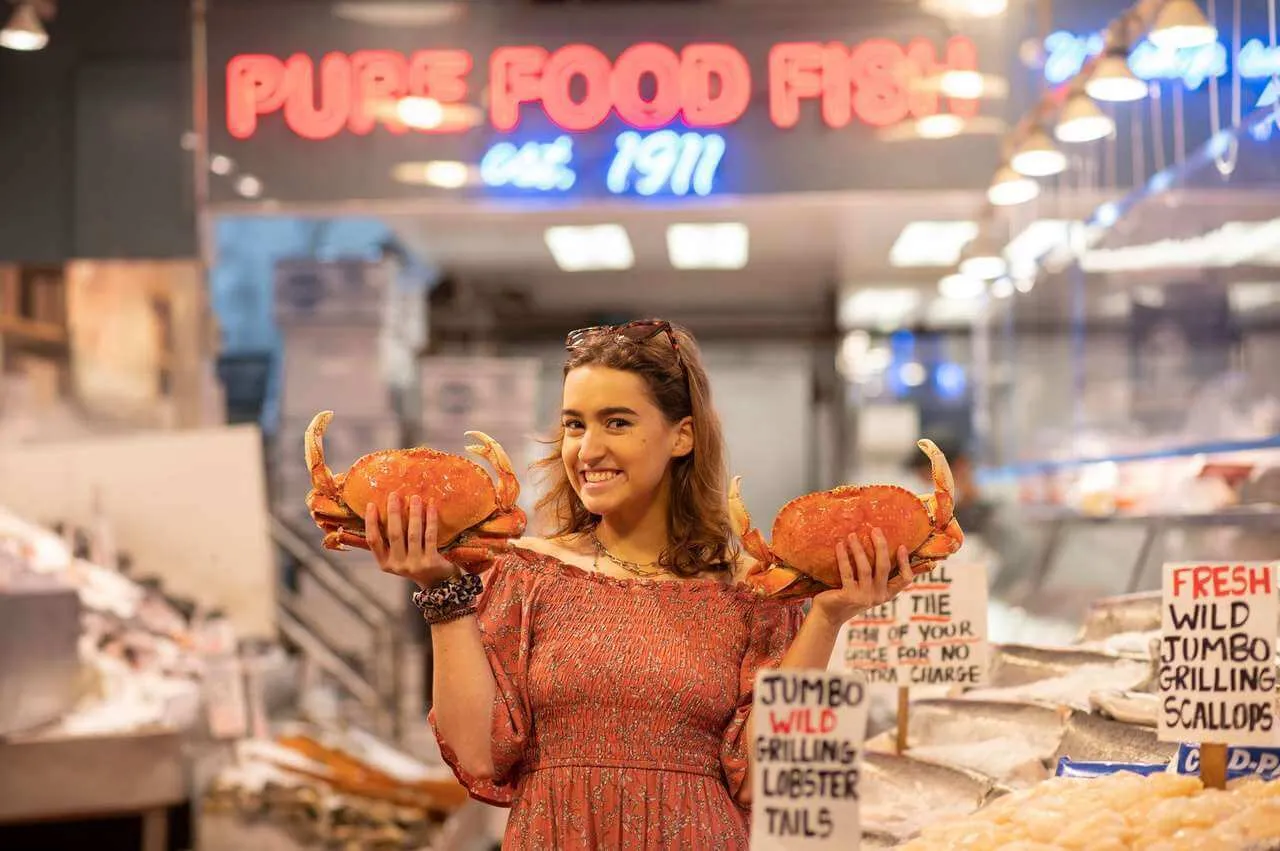 Photo of woman holding crabs at Pike Place Market
Photo of woman holding crabs at Pike Place Market
Geoduck
Perhaps one of Washington’s more unusual but iconic foods is the geoduck (pronounced “gooey-duck”). This enormous, filter-feeding clam is native to the Pacific Northwest and is the largest burrowing clam in the world. Known for its long siphon, which can extend up to a meter, a single geoduck can weigh between 1 to 3 pounds or even more, and they boast an impressive lifespan, often living over 140 years.
Geoducks are highly prized in Asian cuisine, particularly in sushi and sashimi, where their crisp texture and slightly sweet flavor are savored. While their appearance might be striking, their taste is delicate. You can find geoduck featured in creative dishes at restaurants in coastal cities and areas around Puget Sound, like Seattle and Olympia, offering a unique taste of the region’s marine bounty.
Oysters
Oyster farming has a long history in Washington State, dating back to the mid-1800s when prospectors from California flocked to the region. Today, Washington is a major producer of oysters in the United States. Willapa Bay on the state’s southwest coast is a particularly renowned area for oyster cultivation, responsible for about 70 percent of the state’s total production.
Washington offers a wide variety of oysters, each with its own distinct “merroir” – the taste imparted by the specific body of water they grew in. Popular types include the small, native Olympia oyster; the widespread Pacific oyster; and farm-specific varieties like Summerstones from Hood Canal or Virginicas grown by large producers like Taylor Shellfish farms. Enjoying fresh oysters on the half shell, perhaps paired with local wine, is a delicious way to experience Washington’s coastal flavors.
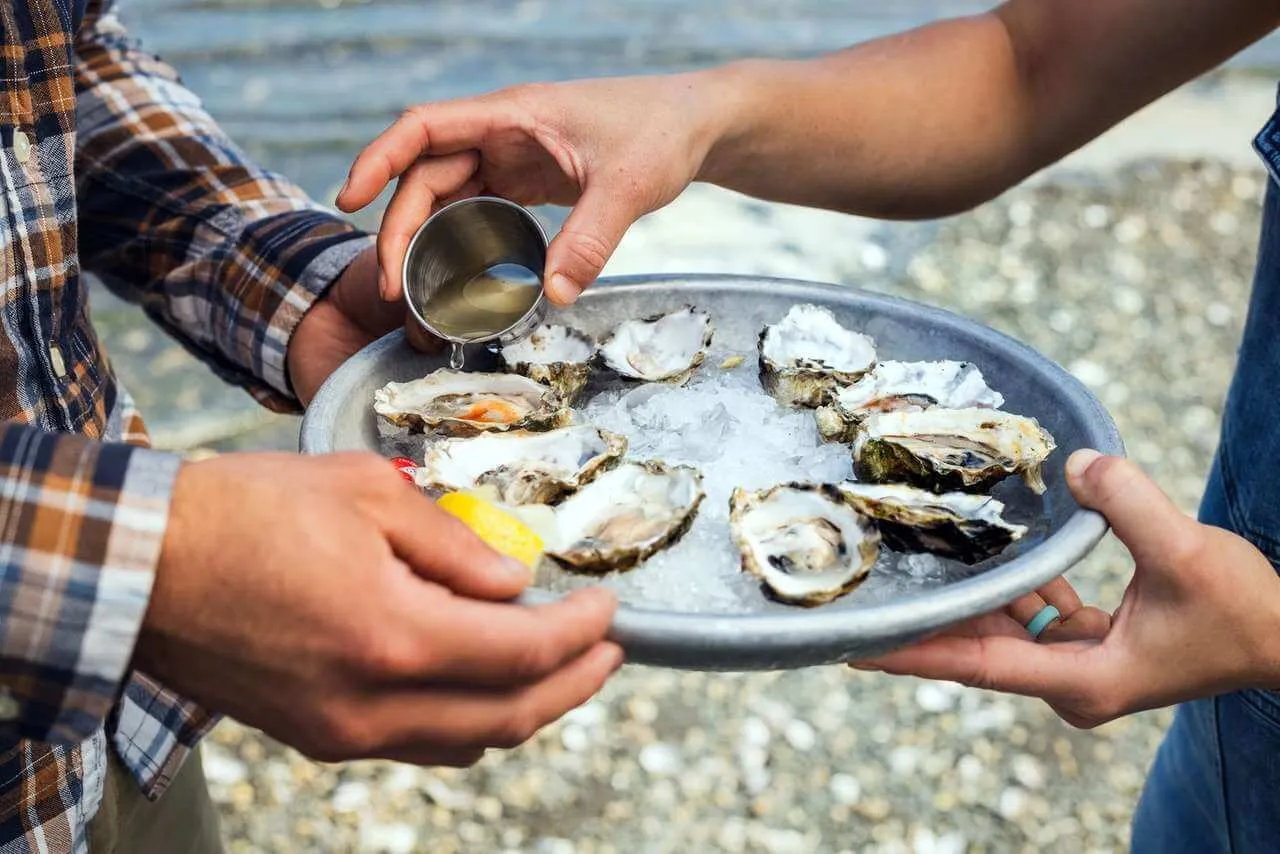 Photo of couple enjoying oysters on the Olympic Peninsula.
Photo of couple enjoying oysters on the Olympic Peninsula.
From the Fertile Land
Beyond its marine richness, Washington’s diverse climate zones, from the wet western slopes to the arid eastern plains, support incredible agricultural productivity. The state is a national leader in the production of numerous crops, providing a steady stream of fresh fruits, vegetables, and grains that form the basis of its vibrant food scene. From large-scale farms to small family orchards, the connection to the land is palpable.
Rhubarb
Washington State is the largest producer of rhubarb in the country, with a significant portion of the yield coming from Pierce County. Rhubarb’s tart stalks are a beloved ingredient in pies, crisps, jams, and sauces, often paired with sweeter fruits like strawberries. The town of Sumner proudly declares itself the “Rhubarb Pie Capital of the World” and hosts an annual festival celebrating this often-underappreciated plant.
Visiting Washington during rhubarb season offers a chance to taste fresh, local rhubarb in various baked goods and desserts. It’s a flavor that signals the arrival of warmer weather and the abundance of the growing season in the Pacific Northwest. The ease with which rhubarb grows here contributes to its prominence in local gardens and markets.
Red Raspberries
Washington State also leads the nation in red raspberry production. Whatcom County, located in the northern part of the state near the Canadian border, is responsible for a staggering 85% of red raspberries grown in the United States. These bright, juicy berries are a summer delight, perfect for eating fresh, adding to breakfast, or using in desserts and preserves.
The summer months offer the opportunity to visit u-pick farms throughout the region, allowing visitors to experience the simple joy of harvesting their own berries straight from the bush. The flavor of a sun-warmed, freshly picked Washington raspberry is hard to beat and represents the state’s agricultural prowess.
Rainier Cherries
Named in honor of Washington’s most iconic peak, Mount Rainier, these distinctive yellow-red cherries are a cross between the popular Bing and Van varieties. Developed in 1952 at Washington State University, Rainier cherries are known for their exceptionally sweet flavor and delicate texture. They ripen typically in June and July.
The Yakima Valley and the north-central region of the state are prime areas for growing Rainier cherries, along with many other sweet cherry varieties. During peak season, roadside fruit stands across these areas are brimming with fresh, locally grown cherries, offering a delicious and healthy snack for travelers. Their unique color and superior sweetness make them a sought-after treat.
Apples
Perhaps the most globally recognized food associated with Washington State is the apple. Washington is the undisputed leading producer of apples in the United States, harvesting between 10 to 12 billion apples annually. The fertile valleys east of the Cascade Mountains, with their hot days and cool nights, provide ideal conditions for growing a wide variety of apples.
From classic varieties like Red Delicious, Golden Delicious, and Granny Smith to newer favorites such as Honeycrisp, Gala, Fuji, and Cripps Pink, there’s a Washington apple for every taste and purpose. These apples are enjoyed fresh, used in baking, cider making, and countless other culinary applications. Exploring apple orchards or visiting farmers markets in the fall is a true Washington experience.
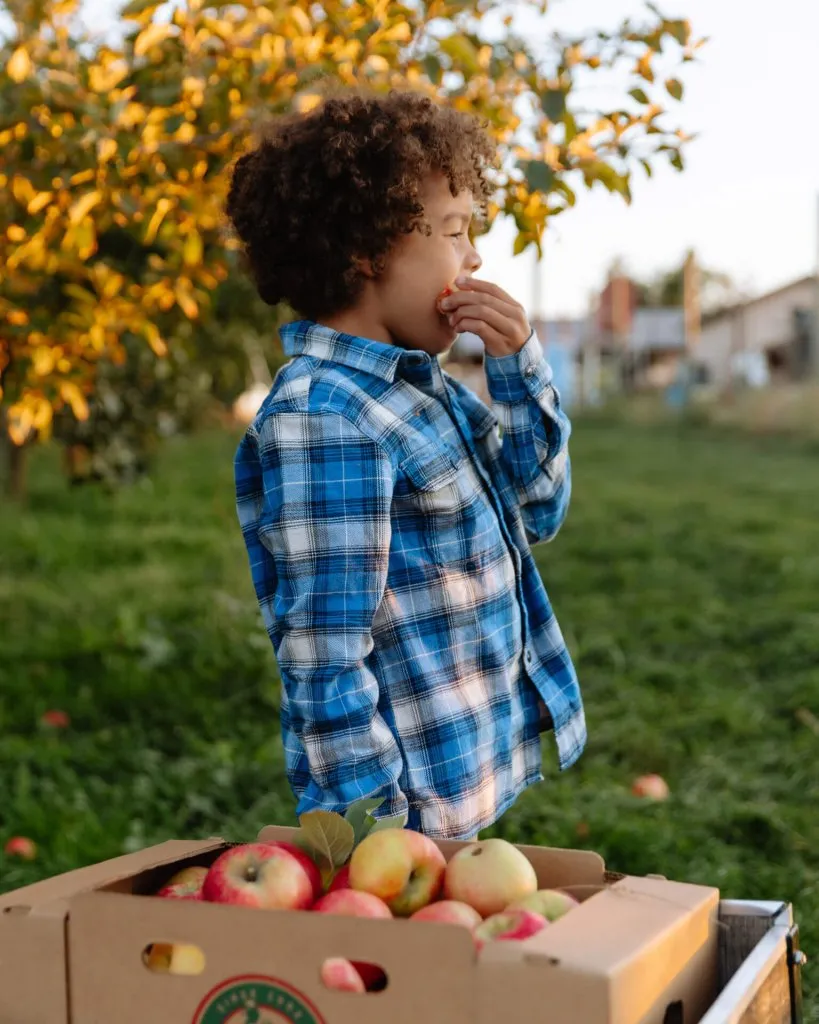 There’s an apple for every taste in Washington.
There’s an apple for every taste in Washington.
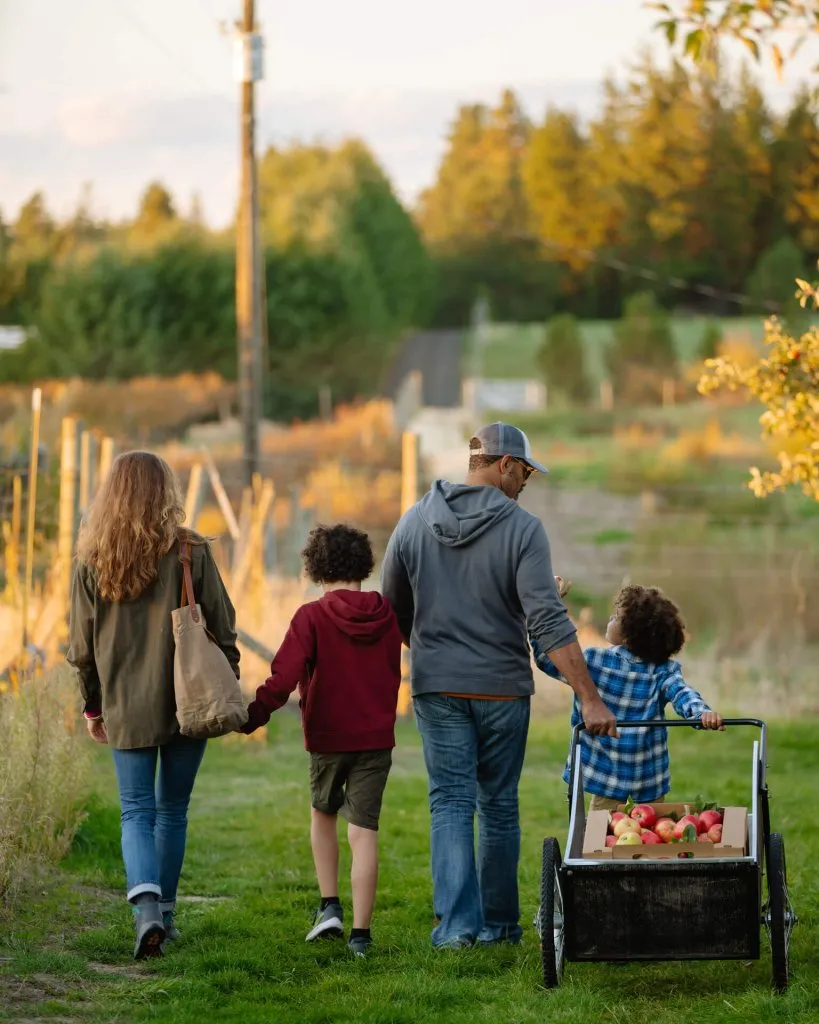 Washington is the leading producer of apples in the country.
Washington is the leading producer of apples in the country.
Lavender
While often associated with Provence, France, the town of Sequim on Washington’s Olympic Peninsula has earned the title of “Lavender Capital of North America.” The unique microclimate of the Sequim-Dungeness Valley, with its rain shadow effect from the Olympic Mountains, provides conditions surprisingly similar to those in the Mediterranean, perfect for growing lavender.
Every summer, typically in July, dozens of lavender farms burst into fragrant bloom, attracting visitors for the annual Lavender Festival. While most lavender is used for oils, soaps, and aromatherapy, edible varieties are also cultivated and used in culinary creations. Lavender can be found in teas, baked goods, ice cream, and even savory dishes, offering a unique floral note to the state’s cuisine.
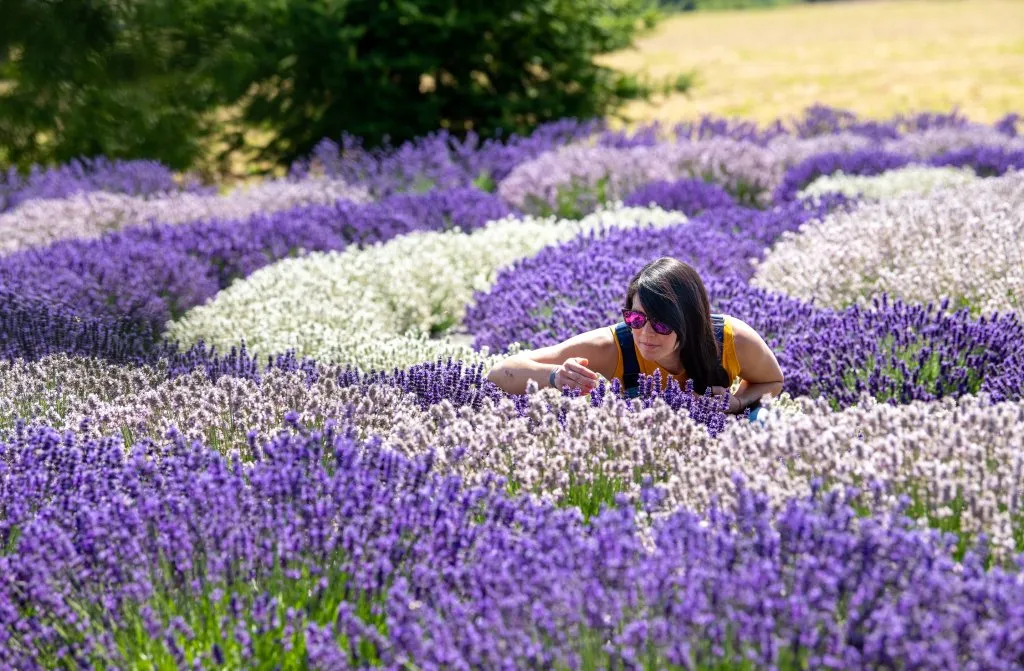 Lavender Capital of North America.
Lavender Capital of North America.
Lentils
Moving to the eastern part of the state, the Palouse Region, known for its rolling hills and fertile soil, is a major producer of legumes, particularly lentils. Washington grows over 62,000 acres of lentils, contributing significantly to the nation’s supply. Lentils are celebrated for their sustainability and nutritional value as a plant-based protein source.
The city of Pullman in the heart of the Palouse hosts the National Lentil Festival each August, complete with a parade, cooking competitions, and plenty of opportunities to sample dishes featuring this versatile pulse. Discovering the importance of lentils reveals another layer of Washington’s diverse agricultural landscape.
Beer Made with Local Hops
Washington State is a powerhouse in the craft beer industry, and that’s largely due to its dominance in hop production. The fertile Yakima Valley accounts for over 70 percent of the country’s total hop acreage. This region’s ideal climate and dedicated growers produce a wide array of hop varieties used by brewers worldwide.
The abundance of local hops fuels a thriving brewery scene across the state, particularly in cities like Seattle and Portland (Oregon, but close enough for influence), but also right in the Yakima Valley itself. Craft breweries pride themselves on using fresh, local ingredients, and “fresh hop” beers, brewed immediately after harvest in the late summer/early fall, are a highly anticipated seasonal treat. Visitors can tour hop farms and breweries in the Yakima Valley, even taking specialized beer buses like the “Little Hopper” to sample the local brews directly from the source.
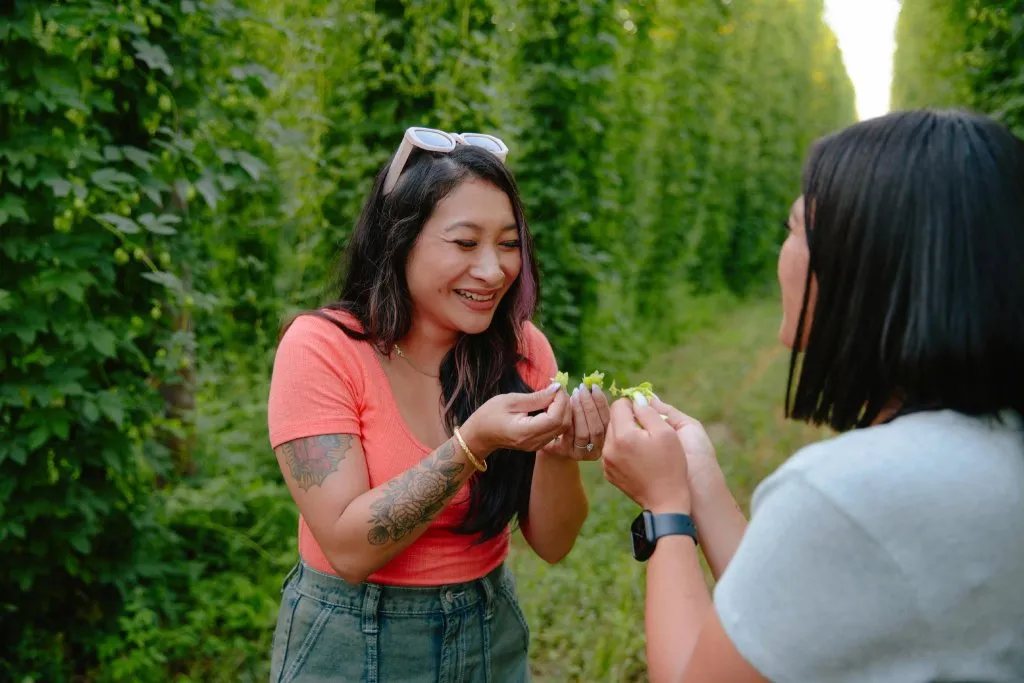 Local Foods to Try in Washington.
Local Foods to Try in Washington.
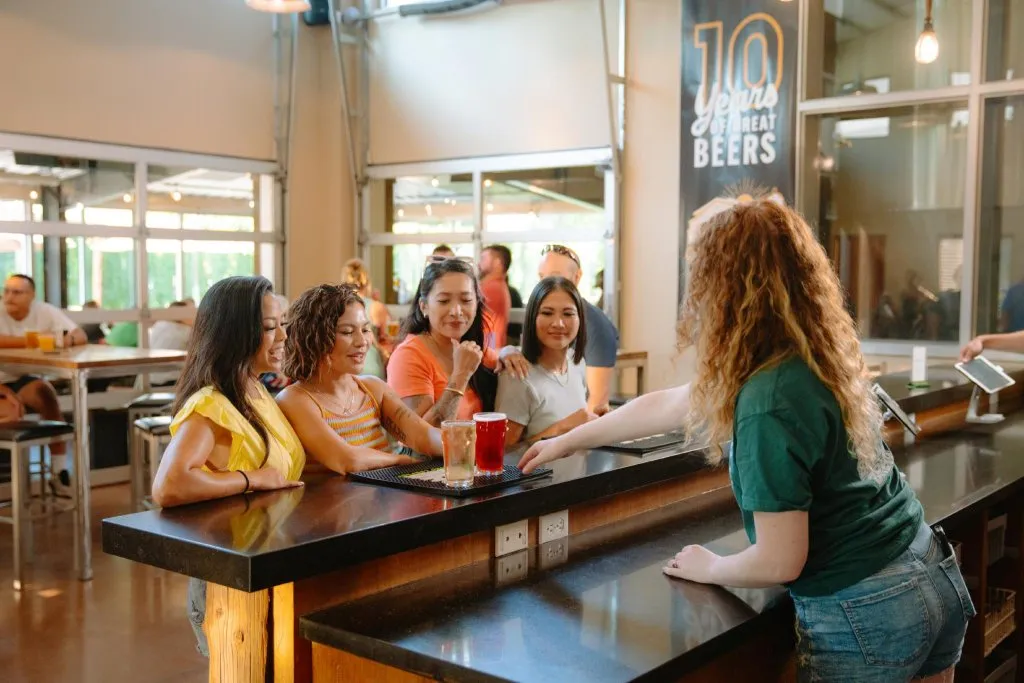 Learn What Food Washington State Known For.
Learn What Food Washington State Known For.
Chanterelles
Beyond cultivated crops, Washington’s forests offer wild edibles, most notably the prized chanterelle mushroom. These golden-brown, trumpet-shaped fungi are sought after by foragers and chefs alike for their earthy aroma, delicate flavor, and meaty texture. Chanterelles typically appear in the fall after the rains begin.
Found in damp, mossy forests across the state, chanterelles are a true seasonal delicacy. They are featured on the menus of many Washington restaurants, often simply sautéed with butter and herbs to let their natural flavor shine. Foraging is popular but requires knowledge and caution; buying from reputable local markets or restaurants is a safer way to enjoy them.
Other Notable Washington Culinary Contributions
Washington’s food scene extends beyond these key ingredients. The state has also made a name for itself in other culinary areas.
Coffee Culture
While not a food in itself, coffee is undeniably a huge part of Washington’s, particularly Seattle’s, identity. As the birthplace of Starbucks, the state has a deep-rooted coffee culture. Beyond the global giant, Washington is home to countless independent coffee roasters and cafes, known for their commitment to quality beans, expert roasting, and skilled baristas. Experiencing the local coffee scene, from a meticulously brewed pour-over to a perfectly crafted espresso drink, is a must-do.
Washington Wine
Washington is the second-largest wine-producing state in the United States, trailing only California. The eastern part of the state, particularly regions like the Columbia Valley, Walla Walla Valley, and Yakima Valley, boasts conditions ideal for growing high-quality wine grapes. Warm days, cool nights, and relatively low rainfall (managed by irrigation) help produce fruit with excellent balance and complexity.
The state is known for its Cabernet Sauvignon, Merlot, Syrah, and Chardonnay, among others. There are over 1,000 wineries across the state, many offering tasting rooms. Exploring Washington’s wine regions provides a delightful journey through picturesque landscapes and exceptional viniculture, pairing perfectly with the local food scene.
Experiencing Washington’s Food Scene
To truly appreciate what foods Washington State is known for, immerse yourself in the local food scene. Visit the bustling Pike Place Market in Seattle, where fishmongers throw salmon and vendors sell fresh produce, flowers, and artisanal goods. Explore farmers markets across the state for seasonal bounty directly from the growers.
Seek out restaurants that emphasize local, seasonal ingredients, often labeled as “farm-to-table” or “boat-to-table.” Travel to agricultural regions during harvest season to visit orchards, farms, or festivals celebrating specific crops like apples, cherries, lentils, or lavender. Don’t forget to explore the vibrant craft brewery and winery scenes.
Whether you’re shucking oysters by the coast, biting into a crisp Washington apple, savoring cedar-planked salmon, or enjoying a craft beer made with local hops, the food of Washington State offers a delicious and authentic taste of the Pacific Northwest.
Frequently Asked Questions
What is the single most iconic food from Washington State?
While it’s hard to pick just one, Pacific Salmon is arguably the most iconic food associated with Washington State, deeply tied to its natural environment, history, and culture.
Where can I try the freshest seafood in Washington?
Fresh seafood can be found throughout the state, particularly in coastal areas and cities with major markets like Pike Place Market in Seattle. Look for restaurants that highlight locally sourced seafood or visit seafood markets directly.
Is Washington known for any specific desserts?
Washington is famous for its produce, so desserts often feature local fruits like apples (apple pie, crisp), berries (raspberry tarts, cobblers), and cherries. Rhubarb pie is also a signature item, especially in areas like Sumner.
When is the best time to visit Washington for specific foods?
Summer (June-August) is great for berries, cherries, and lavender. Fall (September-November) is prime time for apples, pears, lentils, hops (fresh hop beers), and wild mushrooms like chanterelles. Seafood is available year-round, but Dungeness crab seasons vary.
Beyond food, what else is Washington known for?
Washington is also famous for its technology industry (particularly around Seattle), stunning natural beauty (mountains, forests, coastline), outdoor recreation (hiking, skiing, kayaking), and significant contributions to music history (grunge).
In conclusion, Washington State offers a remarkable culinary journey defined by its natural abundance. From the depths of the Pacific to the peaks of the Cascades and the plains beyond, the foods of Washington tell a story of land, water, and the people who cultivate and enjoy them. Trying these iconic local flavors is an essential part of experiencing the Evergreen State.
